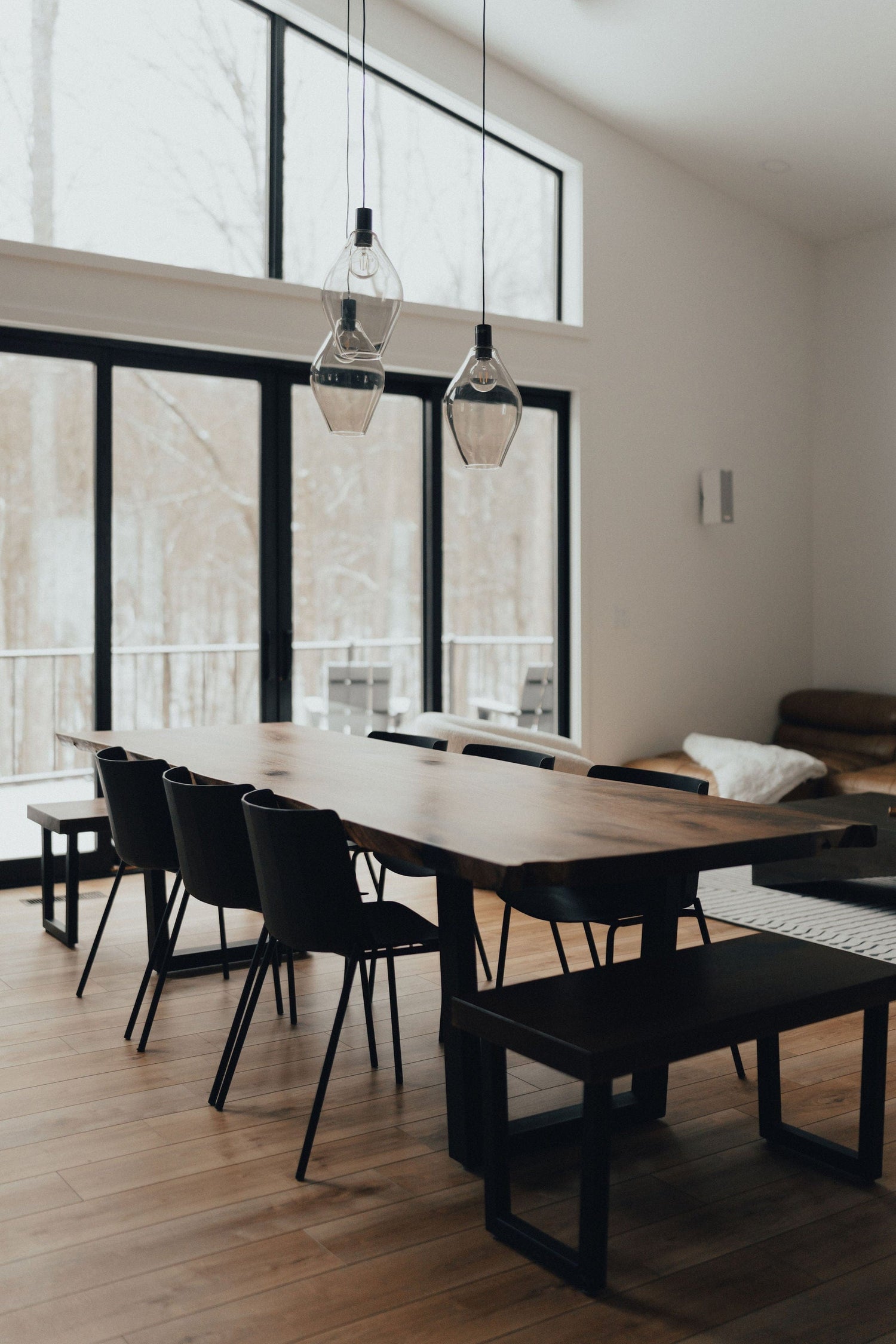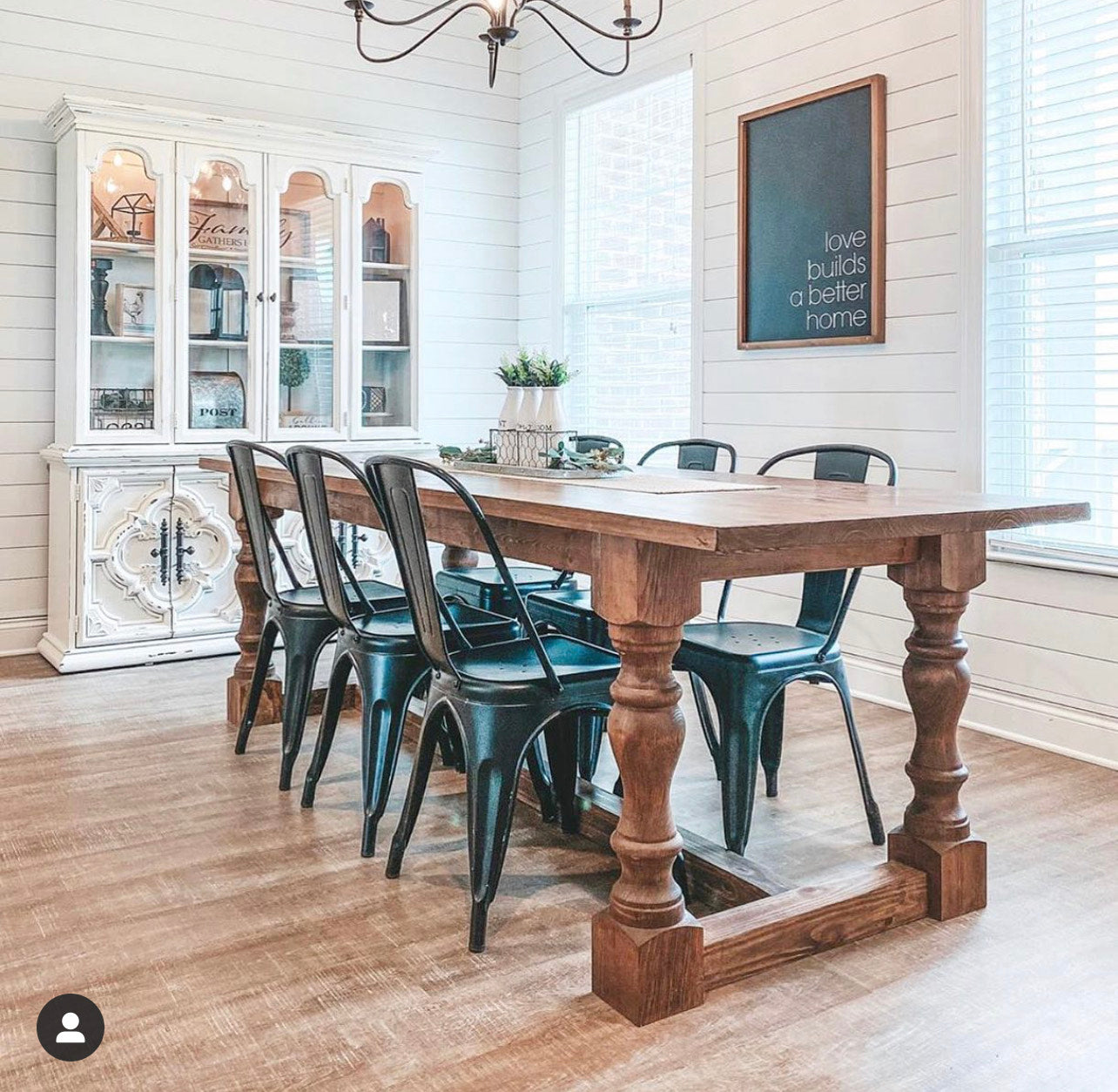Upgrade Your Furniture with Custom Dining Room Table Legs
Wiki Article
From Standard to Modern: Discover the Ideal Eating Space Table Legs for Your Style
The choice of eating room table legs plays a pivotal role in specifying the general personality of your area, bridging the space between typical workmanship and modern visual appeals. While classic styles such as cabriole and turned legs stimulate a sense of classic class, contemporary designs like barrette and geometric choices offer an opportunity for striking visual passion. Assessing the ideal equilibrium in between these styles needs a nuanced understanding of your existing decoration and individual taste. As you take into consideration these elements, the concern continues to be: just how can you effortlessly incorporate these diverse leg styles to develop an unified dining experience?Recognizing Table Leg Styles
The variety of dining-room table leg styles can considerably influence both the appearances and performance of the room. Each leg design adds special practical features and aesthetic elements, satisfying diverse style preferences and usage requirements. Understanding these styles is essential for selecting the right table that straightens with your total indoor style vision.As an example, conical legs offer a clean, traditional look that can improve an area's sophistication, while pedestal bases provide security and make the most of legroom, making them suitable for smaller sized spaces. Barrette legs, a characteristic of mid-century modern design, present an industrial flair, enabling a ventilated, open feel. Trestle legs stimulate rustic appeal, providing robust assistance and a sense of eternity.
Additionally, the option of products plays a substantial role. Wood legs can bring warmth and structure, whereas steel choices usually share a smooth, modern vibe. Inevitably, comprehending table leg styles is crucial for producing a cohesive eating location that mirrors personal design while ensuring usefulness and comfort. By attentively thinking about these components, you can enhance both the useful and visual allure of your dining area.
Conventional Table Leg Options
When choosing dining-room table legs, traditional options often embody classic elegance and workmanship. These designs show an abundant heritage and a commitment to high quality, making them excellent for those that appreciate timeless visual appeals.Among the most iconic typical leg designs is the cabriole leg, defined by its stylish bent form. This style often features decorative carvings and is most commonly found in Queen Anne and Chippendale furnishings. One more prominent choice is the turned leg, which flaunts a series of smooth, rounded shapes that provide a classic look while keeping stability.
Furthermore, the straight leg, while simple, provides a sturdy and basic structure that can mix perfectly with a selection of tabletop designs. For those drawn to ornate detailing, claw-and-ball feet legs evoke a feeling of grandeur and can act as a stunning centerpiece in any kind of eating room.
Finally, pedestal bases, although not purely legs, offer a different typical choice that permits adequate legroom and can be magnificently carved. Each of these traditional leg designs contributes to the total setting of an eating space, weding function with aesthetic charm.

Modern Table Leg Designs
Modern table leg designs supply a varied variety of designs that stress tidy lines and innovative products. These designs often focus on functionality while working as striking focal factors within an eating space. Minimal aesthetic appeals prevail, with legs crafted from materials such as steel, glass, and crafted timber, which contribute to a ventilated and contemporary feeling.One prominent layout is the barrette leg, characterized by its slender, conical structure that offers security without overwhelming the tabletop (dining room table legs). This style is usually discovered in mid-century modern-day furniture and can effortlessly complement various eating table forms. Another pattern is using geometric forms, where legs might take on angular or asymmetrical kinds, including visual rate of interest and a touch of creativity

Blending Designs for One-of-a-kind Rooms
Frequently, property owners seek to develop one-of-a-kind eating areas that show their personal style by mixing numerous style aspects. This method allows for the incorporation of varied aesthetics, causing a harmonious yet distinctive setting. For example, matching a rustic wooden table with streamlined, contemporary metal legs can create an attractive contrast that raises the room's overall appeal.Furthermore, incorporating vintage table legs with modern tabletops can evoke a sense of history while keeping a modern-day perceptiveness. Such combinations not just display private preference but additionally motivate creative thinking, enabling property owners to curate a space that feels both individual and inviting.
Shade plays a critical role in this mixing process; selecting table legs that website link match or contrast with the existing color design can boost aesthetic interest. As an example, whitewashed legs can soften the daring of a dark table surface, producing a well balanced aesthetic.
Tips for Picking the Right Legs
Selecting the right table legs visit their website is crucial for achieving both capability and aesthetic allure in your eating space. Begin by taking into consideration the total style of your space. Typical settings take advantage of legs that feature detailed makings or transformed designs, while contemporary areas may call for smooth, minimal styles.Next, evaluate the elevation and security of the legs. dining room table legs. Standard table vary between 28 to 30 inches in elevation, so make certain the legs enhance this measurement for comfort. Furthermore, durable products, such as wood or steel, can improve stability and long life
Review the leg form too-- options include straight, tapered, or stand layouts. Straight legs supply a traditional appearance, while conical legs can include a touch of elegance. Pedestal bases offer adequate legroom and are suitable for smaller sized rooms.
Verdict
In recap, selecting the optimal eating space table legs needs careful consideration of both traditional and modern designs. Typical alternatives such as cabriole and transformed legs use ageless sophistication, while contemporary designs like barrette and geometric forms provide a modern touch. By balancing leg style, height, and product with the general decor, a natural and inviting atmosphere can be attained. Inevitably, the selected table legs need to mirror the preferred aesthetic, enhancing the eating experience within the area.The selection of dining room table leg styles can considerably affect both the appearances and capability of the space. Inevitably, understanding table leg designs is vital for creating a natural eating area that mirrors personal style while making sure functionality and convenience.One of the most renowned typical leg styles is the cabriole leg, identified by its graceful rounded form. Straight legs offer her explanation a traditional look, while conical legs can add a touch of sophistication.In recap, choosing the ideal dining space table legs calls for cautious consideration of both modern and standard designs.
Report this wiki page